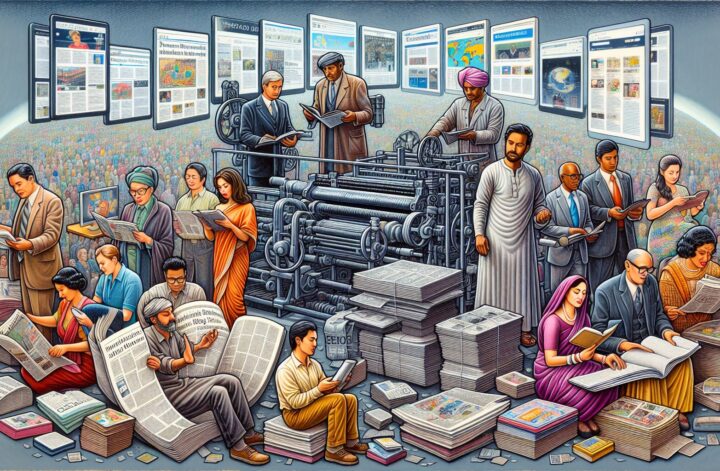
Introduction
As technology continues to advance, the world of printing has seen significant changes in recent years. From the traditional methods of printing to the introduction of 3D printing, there is a wide range of materials available for various printing purposes. In this comprehensive guide, we will explore different types of printing materials, their applications, and the advantages they offer. Whether you are a printing enthusiast or a newcomer, this article aims to provide valuable insights into the vast world of printing materials.
Body
1. Paper
Paper is undoubtedly one of the most popular and versatile printing materials. Its low cost, accessibility, and ease of use make it an ideal choice for a wide range of applications. From printing documents to creating art, paper can be found in almost every setting.
Applications
- Documents: Paper is extensively used for printing various documents such as letters, invoices, contracts, and reports.
- Books and Magazines: The majority of books and magazines are printed on high-quality paper to provide a comfortable reading experience.
- Marketing Collateral: Flyers, brochures, business cards, and posters are commonly printed on paper to promote products or services.
Advantages
- Affordability: Paper is one of the most cost-effective printing materials, making it widely accessible.
- Versatility: With a variety of weights, sizes, and textures available, paper can cater to various printing needs.
- Recyclability: Paper is an eco-friendly option as it can be recycled and used for a range of other purposes.
2. Photographic Paper
Photographic paper, also known as photo paper, is specifically designed for printing high-quality photographs. This type of paper is coated with a light-sensitive emulsion that reacts to light and produces sharp, vibrant images.
Applications
- Photography: From amateur photographers to professionals, photographic paper is widely used to print vibrant, long-lasting photographs.
- Artistic Prints: Many artists prefer printing their digital artworks on photographic paper to ensure the best color accuracy and quality.
Advantages
- Image Quality: Photographic paper produces high-quality prints with excellent color accuracy and sharpness.
- Longevity: The prints made on photographic paper are resistant to fading and can retain their vibrancy for many years.
- Finishing Options: Photographic paper often offers a variety of finishes, such as glossy, matte, or metallic, providing different artistic effects.
3. Vinyl
Vinyl is a durable and weather-resistant material that is commonly used for large-format printing. It is often used for outdoor advertising, signage, and banners, thanks to its ability to withstand exposure to harsh weather conditions.
Applications
- Banners: Vinyl banners are a popular advertising tool, widely used for promoting events, sales, and businesses.
- Vehicle Wraps: Vinyl wraps are commonly used to transform the appearance of vehicles for advertising or personalization purposes.
- Signage: Vinyl is often used for creating signs that need to be weather-resistant, such as outdoor store signs or construction signs.
Advantages
- Durability: Vinyl is highly resilient and can withstand the elements, making it suitable for outdoor use.
- Versatility: Vinyl can be printed in large sizes, allowing for attention-grabbing banners and signs.
- Vibrant Colors: Vinyl printing provides vibrant and eye-catching colors, ensuring the message stands out.
4. Plastic
Plastic is another versatile material used in the printing industry. It offers a wide range of options, from rigid plastics like PVC to flexible films like polyethylene, each with its unique properties.
Applications
- Packaging: Plastic is widely used for printing packaging materials, such as blister packs, shrink wrap, and product labels.
- Cards: Identification cards, credit cards, and gift cards are often made from plastic to ensure durability.
- 3D Printing: Certain types of plastic, such as PLA or ABS, are commonly used as filaments in 3D printing.
Advantages
- Durability: Plastic is resistant to moisture, chemicals, and wear, making it a long-lasting option for various applications.
- Customization: Plastic can be easily molded or shaped, allowing for the creation of unique designs or 3D objects.
- Protection: Plastic packaging materials offer protection against breakage, tampering, and other external factors.
5. Metal
Metal may not be the first material that comes to mind when thinking about printing, but advancements in technology have made metal printing a reality. Metal prints offer a unique and modern look, making them a popular choice for artwork and high-end photography.
Applications
- Art Prints: Metal prints offer a contemporary and sleek look, making them a preferred choice for modern art installations and galleries.
- Photography: Metal prints can enhance the visual impact of photographs, creating a unique and vibrant viewing experience.
- Signage and Decorations: Metal prints can be used for creating durable and eye-catching signage or decorative pieces.
Advantages
- Visual Appeal: Metal prints provide a unique metallic finish that adds a modern and elegant touch to printed images.
- Durability: Metal prints are resistant to fading, moisture, scratches, and other forms of damage, ensuring longevity.
- Lightweight: Despite their metal composition, metal prints are generally lightweight and easy to handle.
Conclusion
In the vast world of printing, the choice of materials plays a crucial role in defining the quality, appearance, and durability of printed products. From traditional paper to modern and innovative options like metal or plastic, the wide range of materials available ensures that there is a perfect fit for every printing need. By understanding the applications and advantages of different printing materials, you can make informed decisions and explore new possibilities in the world of printing. So, whether you are printing a book, a photograph, or creating unique artwork, the choice of material is an essential factor that can elevate your printing experience.

